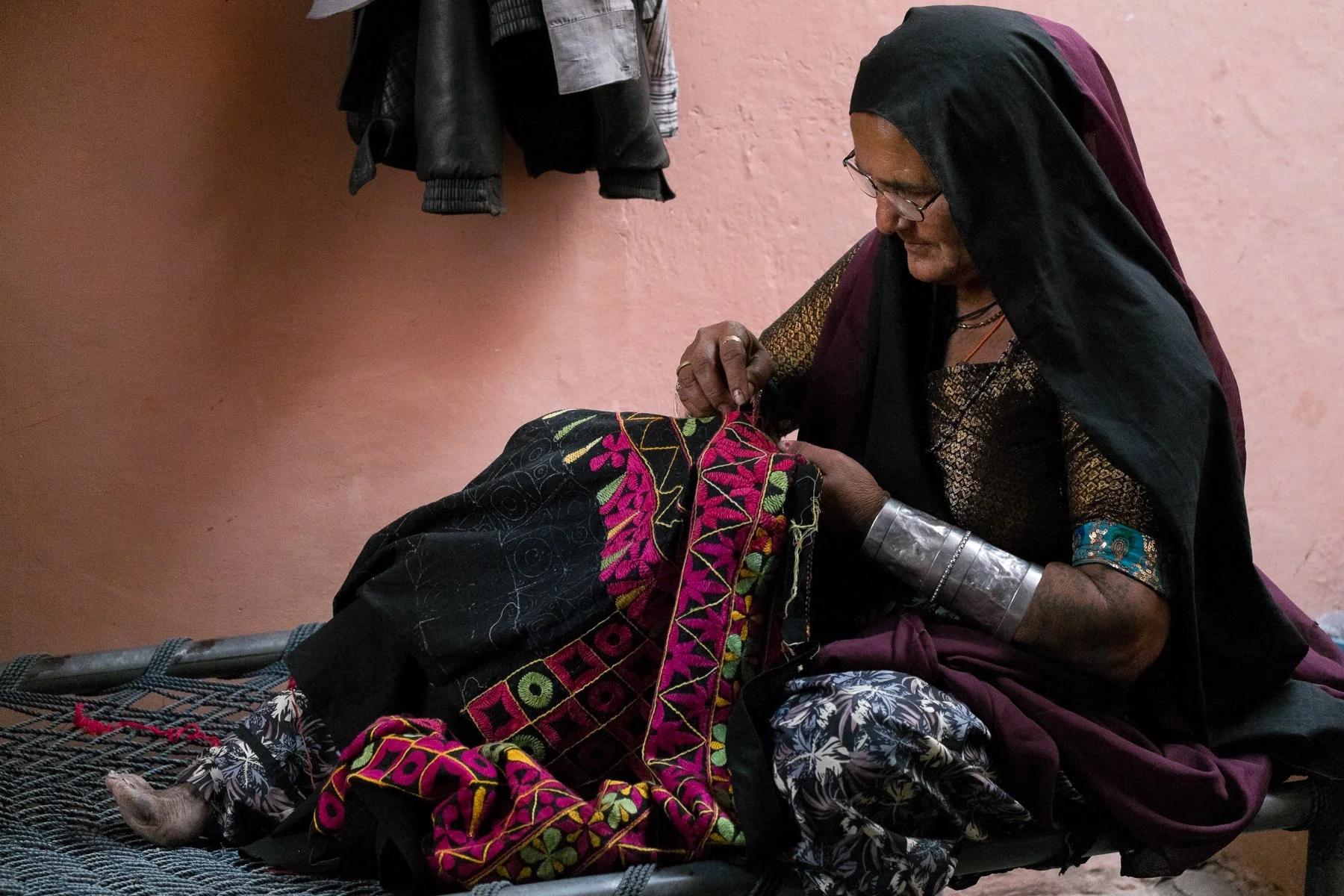My photos of my trip to Gujarat, India, in February 2016, together with my friend Doreen Mirvish Bahiri on my smugmug site: https://ritamendes-flohr.smugmug.com/INDIA-2018-and-2016/INDIA-2016/TEXTILE-ARTS-IN-GUJARAT/
my photos on the site of Dervish, Doreen’s ethnic arts shop in Tel Aviv https://www.dervishethnic.com/yunnan-china
In search of textile arts in Kutch, Gujarat
A journey with Doreen Bahiri Mirvish of “Dervish” Ethnic Arts Gallery –
Dov Hoz 21, Tel Aviv, tel: 03- 5248852
“I am going with you”, I blurted out when my friend Doreen said she was thinking of traveling to Bhuj, in India’s westernmost state, Gujarat, a region celebrated for its rich tradition of textile arts.
I am a lover of deserts, and having read the book Desert Places, by the Australian camel-trekker Robin Davidson, I had my own fantasies about Gujarat, a region that is far from India’s tourist track. I embarked on this trip with Doreen, thinking it would be an opportunity to explore and photograph the white, salt desert at The Great Rann of Kutch, as well as the architectural marvels of stepwells, built in these arid regions to reach the low-lying groundwater and the old, abandoned shipyards at Mandvi, on the Gujarat coast. I did not realize, until I got there, how exciting it would be to capture the artisans at work, and Doreen interacting with them, with her endearing charm and sense of humor, making immediate contact with everyone.
We visited at least 20 different workshops, homes, crafts stores and exhibition spaces with our marvelous guide Kuldip Gadhvi of Kutch Adventures India, and when Kuldip was not available, his friend, the driver Umar, took us to more sites and workshops in Kutch. Further east, around the Little Rann of Kutch, we traveled with the Rannriders, in addition to being invited to stay at the home of Kuldip’s uncle and aunt, meeting their teenage twins, who were thrilled to practice their English with us.
Starting out with a visit to the home of a collector from the Rabari tribe, we learned about the signature embroidery styles from different ethnic groups.
Embroidery, an art done by women, allows for personal expression within the traditional language of stitches, color and motifs. Often incorporating tiny mirrors within the work, embroidery serves as embellishment of the body, home and pack animals, as an integral part of weddings and other ceremonies and as portable wealth among semi-nomadic peoples. Plaster reliefs, incorporating little mirrors, similar to the patterns in embroidery, also decorate the walls of their mud-hut homes. Large applique blankets, with human figures and animals, often tell a story.
In the village of Sumrasar, we visited the high quality shop, museum and archive of Kala Raksha, an impressive nonprofit organization dedicated to preserving the traditional arts of embroidery, while at the same time, guiding traditional artists to adapt their designs to the contemporary market.
Weaving, as well as block printing and the dyeing of textiles, is done by men in Gujarat - though women are the ones who tie the minute knots on silk in the tie-dyeing process (bandani) and who wind the threads for the weavers.
We saw various kinds of weaving, from the simpler cotton looms, to
the complex technique of silk and cotton mushru weaving with eleven pedals to lift different threads of the warp separately– as if playing an organ.
The crown of the art is the even more intricate silk Patola in the town of Patan, the double ikat weaving technique, where the pattern is tie-dyed on both the warp and waft, and the threads magically come together to form the design.
Block printing is done with carved wooden blocks dipped in varying color dyes and stamped by hand onto the cotton cloth. One such technique in Gujarat is ajrak printing, using traditional patterns and natural dyes.
Batik block printing is found in Mundra, on the Gujarat coast, with the stamps immersed into molten wax in a heated bin, carefully pressed onto the same patterns already printed in one color, in order to resist the dye applied to the remaining cloth.
prev / next
JOURNEYS: textile arts in Gujarat, India. 2016
to view full screen: press F11 on PC
and ^ + ⌘ + F (Control+Cmd+F) on Mac
all photographs and texts:
copyright © Rita Mendes-Flohr







